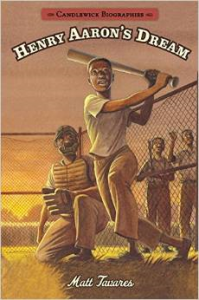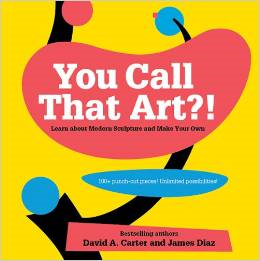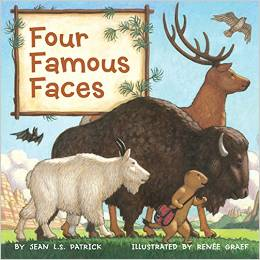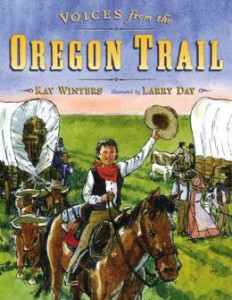Written and illustrated by Matt Tavares
Nearly everyone who knows anything about baseball knows about Hank Aaron. He did, in fact, break the all-time home run record set by Babe Ruth. But do fans know about his youth? Drawing a picture of a hard-playing youth, Tavares makes the hero even more accessible to young readers. Young Henry Aaron loved baseball so much, he would swing any stick to make any object to make it fly. He began with a broom handle and bottle caps. He started playing with real baseball diamonds, bats, and balls when he was twelve. He grew up in a Mobile that was strictly segregated. So, when he began his career, only the Negro Leagues were available to him despite Jackie Robinson breaking the color barrier with the Dodgers. Eventually, he was invited to play for a farm team for the Braves. He proved himself through his willingness to listen and learn, his perseverance, and his natural talent. He was one of the best players ever and one of the most respected men in sports.
Vivid illustrations make the story come alive.
The third grade reader hears about Henry Aaron, history, civil rights, sports, and following one’s dreams and talents. This volume of Candlewick Biographies will promote literacy skills and comprehension.
 Title: Henry Aaron’s Dream
Title: Henry Aaron’s Dream- Author/Illustrator: Matt Tavares
- Publisher: Candlewick, 2012
- Reviewer: Sue Poduska
- Format: Hardcover, 40 pages
- Grade Level: 3 to 7
- Genre: Nonfiction, biography, history, sports
- ISBN: 978-0763658205









